Written by Lorrie Reynolds
Categories
My grandkids visited at the beginning of May. One is 4, the other not quite 2. They are typical children – active, sometimes (often) noisy, unpredictable, energetic, and a never-ending source of dropped food, much to my dogs’ delight.
Of my four dogs, I have one who adores kids (Onyx – on the cover photo), one who loves them but is startled by quick movements (Rainer), one who is very tolerant, likes them in small doses and walks away when she’s had enough (Pixie), and one who was terrified of them (Xephyr). At the beginning of the last visit, any time my grandson moved quickly, Xephyr would alarm bark and growl.
Obviously, we never, ever left the kids and dogs alone together, and we monitored interactions closely. The dogs got lots of breaks in a different room or outside where the kids weren’t allowed. Both kids are good about listening to direction when it comes to the dogs (yes, even the “terrible twos” toddler). They have a dog at home, and have been taught to be gentle and careful.
(Photo: Onyx loves kids, and is unfazed walking next to a toddler on a ride-on toy.)
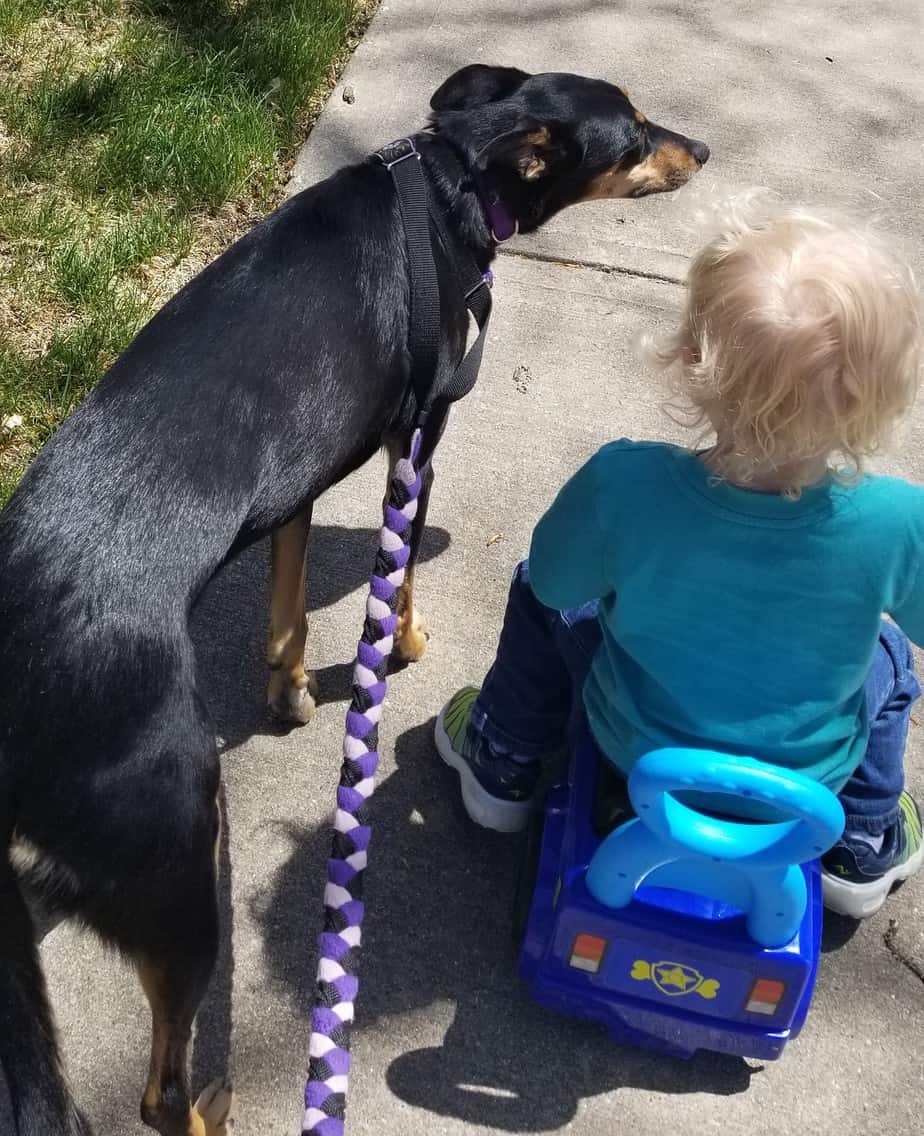
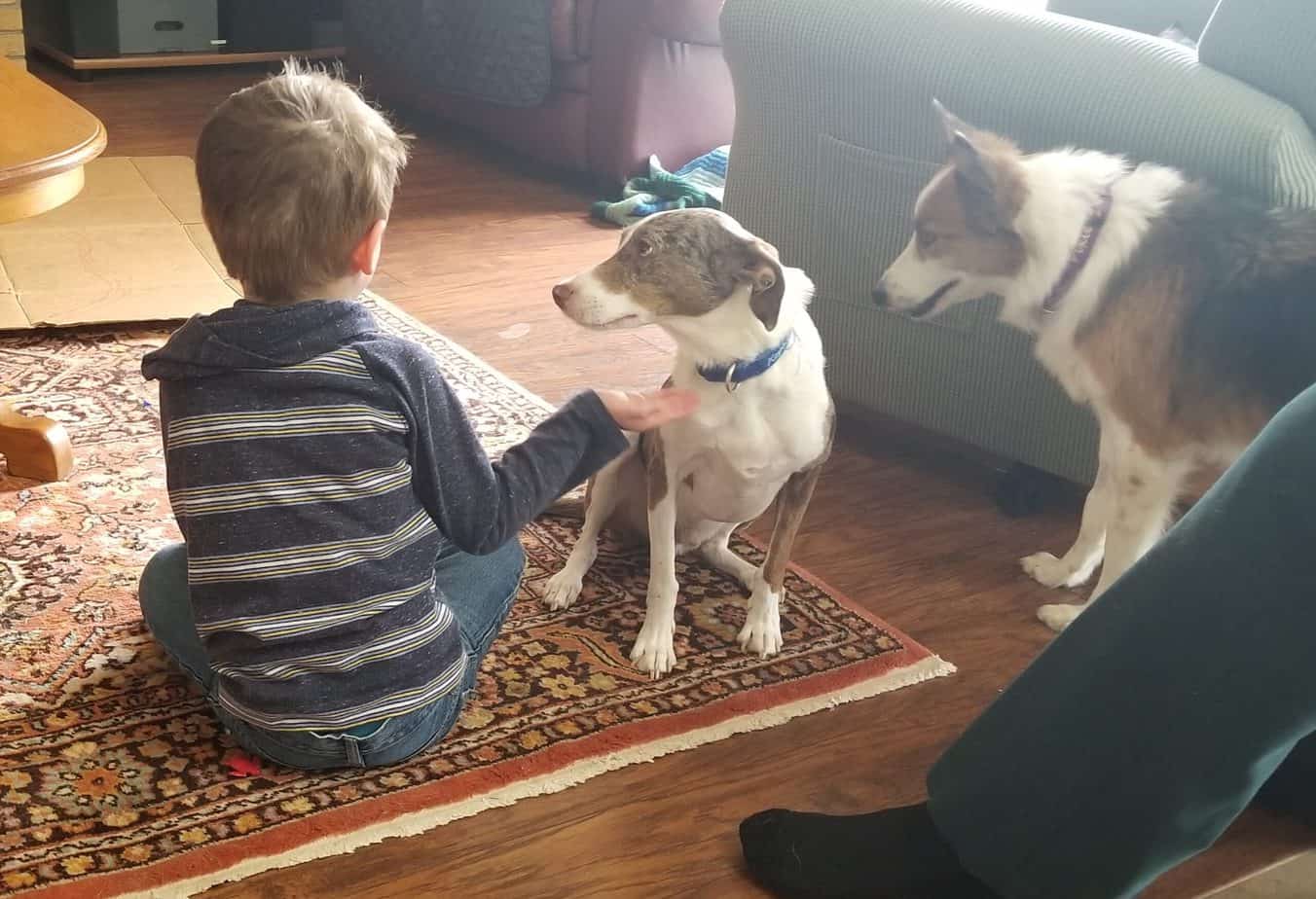
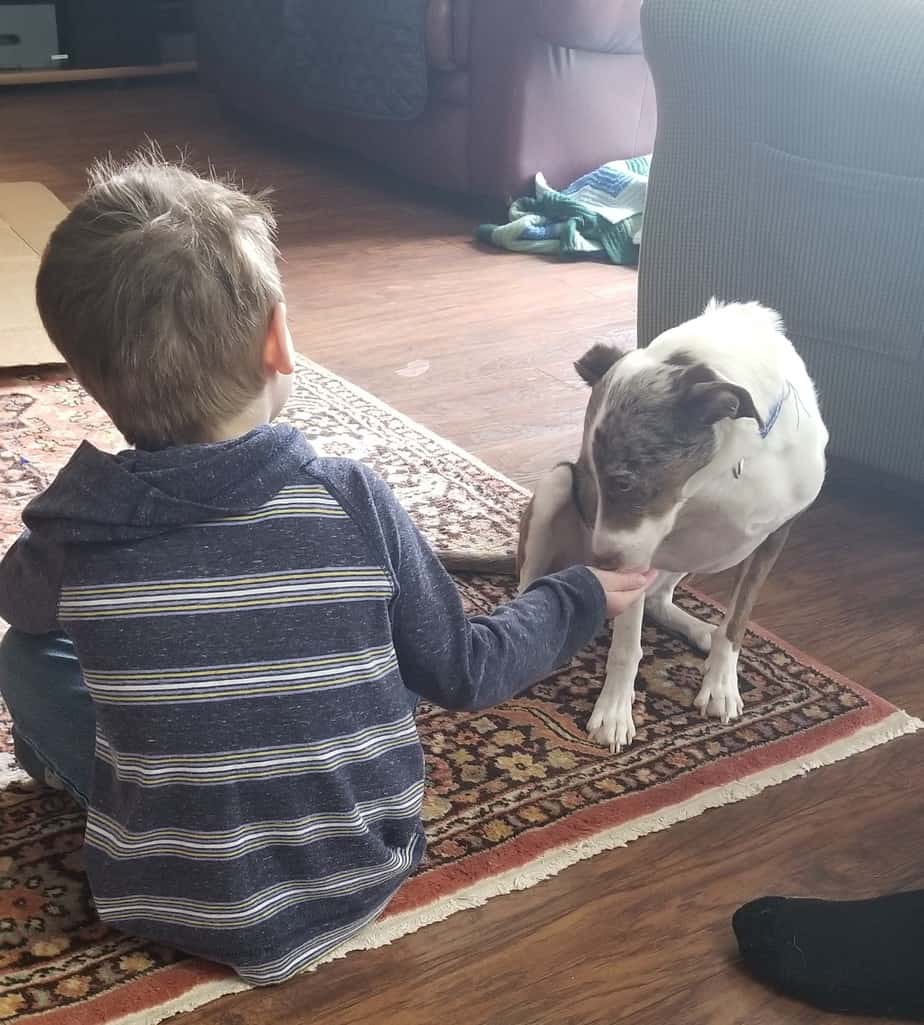
We’ve made huge strides even with Xephyr – enough that I could let him hang out with the family rather than crating him for the entire visit. We haven’t had any alarm barking or growling, even if the kids were running close by. It isn’t something that happened naturally though. It took effort and my dog-savvy 4-year-old grandkid to get us there.
(Photos: Dog-savvy 4-year-old allowing a scared dog to approach and sit next to him. Notice he is not looking at or leaned toward the dog. This is several steps into the process – not where we start. There is no food involved. The dog approaches only if he wants to, without being lured with food.)
I’ve been at lots of agility trials where handlers have complained about kids being near the ring watching because they have dogs who are afraid of them. I’ve seen some go to great lengths to make sure there were no kids anywhere CLOSE to the ring before their turn.
Here’s the thing though – kids are a fact of life. We talk about agility as a “spectator sport” and in many places, trials are held in local parks – where there are kids.
I understand the difficulty in socializing dogs with kids when you don’t have any. My kids are grown, and my grandkids live in a different state.
However, since kids are always going to be around, we need to train our dogs to tolerate their presence, just like we would any other distraction or object our dogs are afraid of. We can’t expect to compete in a sterile environment where we can tell people that they can’t come to a local park and watch if they bring their children.
Socialization doesn’t mean they have to love kids, be petted by them, or interact with them in any way. It means they have to be able to “work” around them just like any other distraction.
If our dogs are afraid of umbrellas, like we use for shade at trials, or the beep of the timer, or bicycles riding by, we don’t insist that the club remove all umbrellas, timers, or bicycles – we train for them. We desensitize our dogs, starting at a distance, until they can perform around them.
Today’s Training Tip for Agility and Trick Dogs
Today’s tip is to make a conscious effort to desensitize your dog to children so they can perform their tricks or play agility when kids are present. If you don’t have any, rent some (kidding!).
In all seriousness, go to your local park with a playground. Start 100 feet away from the kids and ask your dog for some easy behaviors. Gradually, over time, move closer until your dog can work close to the kids without showing signs of nervousness. Always keep the dog under threshold as you move closer. If people ask to pet your dog, the easy and polite answer is “No, I’m sorry, we are training right now.” If someone with kids heads in your direction, turn and head with purpose the other way while treating your dog. They will get the message.
If you have friends with dog-savvy kids or grandkids, explain the situation and ask if you can work with them. I want to reiterate that you do NOT have to ever allow kids to pet or directly interact with your dog, especially if you think it might be unsafe to do so. However, it is important that your dog learns to work around kids just like any other distraction. I took the extra steps with my scared dog to ensure we wouldn’t have an incident if the kids ran too close or fell near him.
Have questions? Need some extra tips for desensitizing your dog to kids? Email me! I’m happy to help with this issue.
You Might Also Like…
Five Ways to Crush It at Your Next Dog Agility Seminar
Going to a dog agility training seminar? Check out these five tips to maximize your return on investment!
Read This Before Deciding on Your Agility Dog’s Contact Performance
Which contact performance, running or stopped, is right for your team? The answer might surprise you.
Is Your Agility Dog a Pinto or a Ferrari?
If you’ve moved up from a slow or moderately-fast agility dog to a speed racer, here’s some advice to make your life easier.
Get tips, stories, discounts, and early notification of events and new courses delivered straight to your inbox! Join the community!

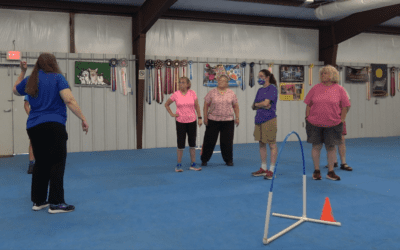
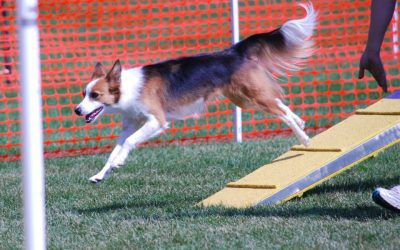
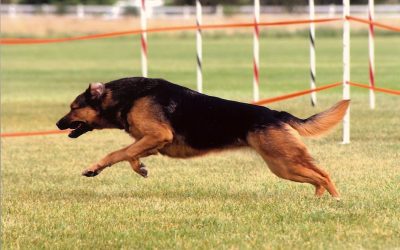
0 Comments